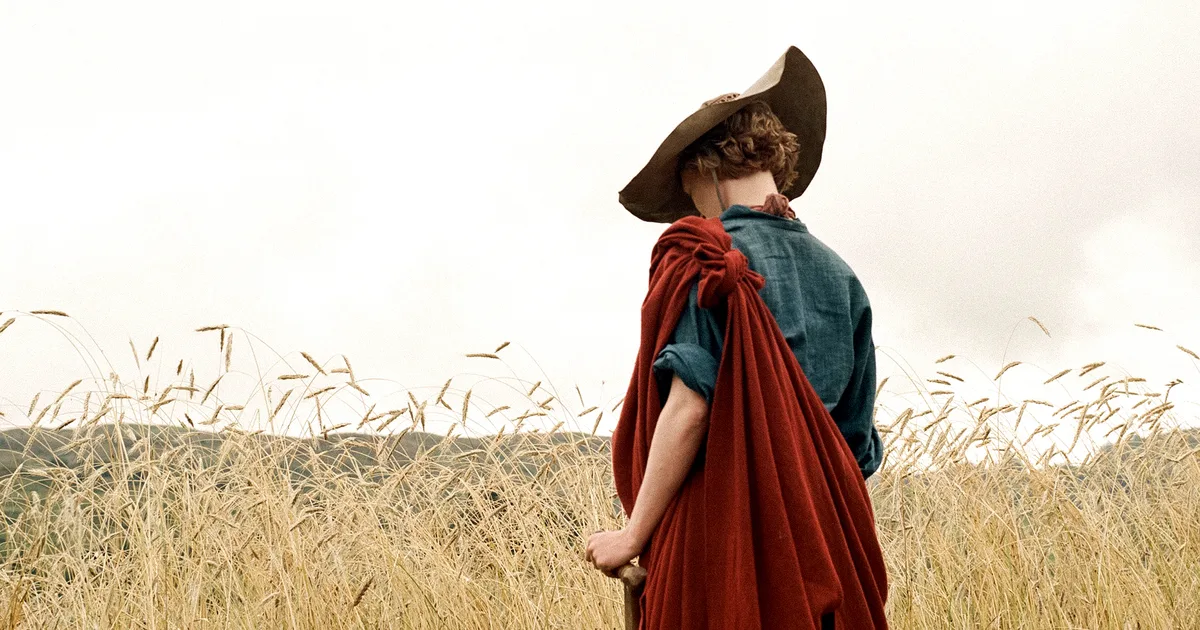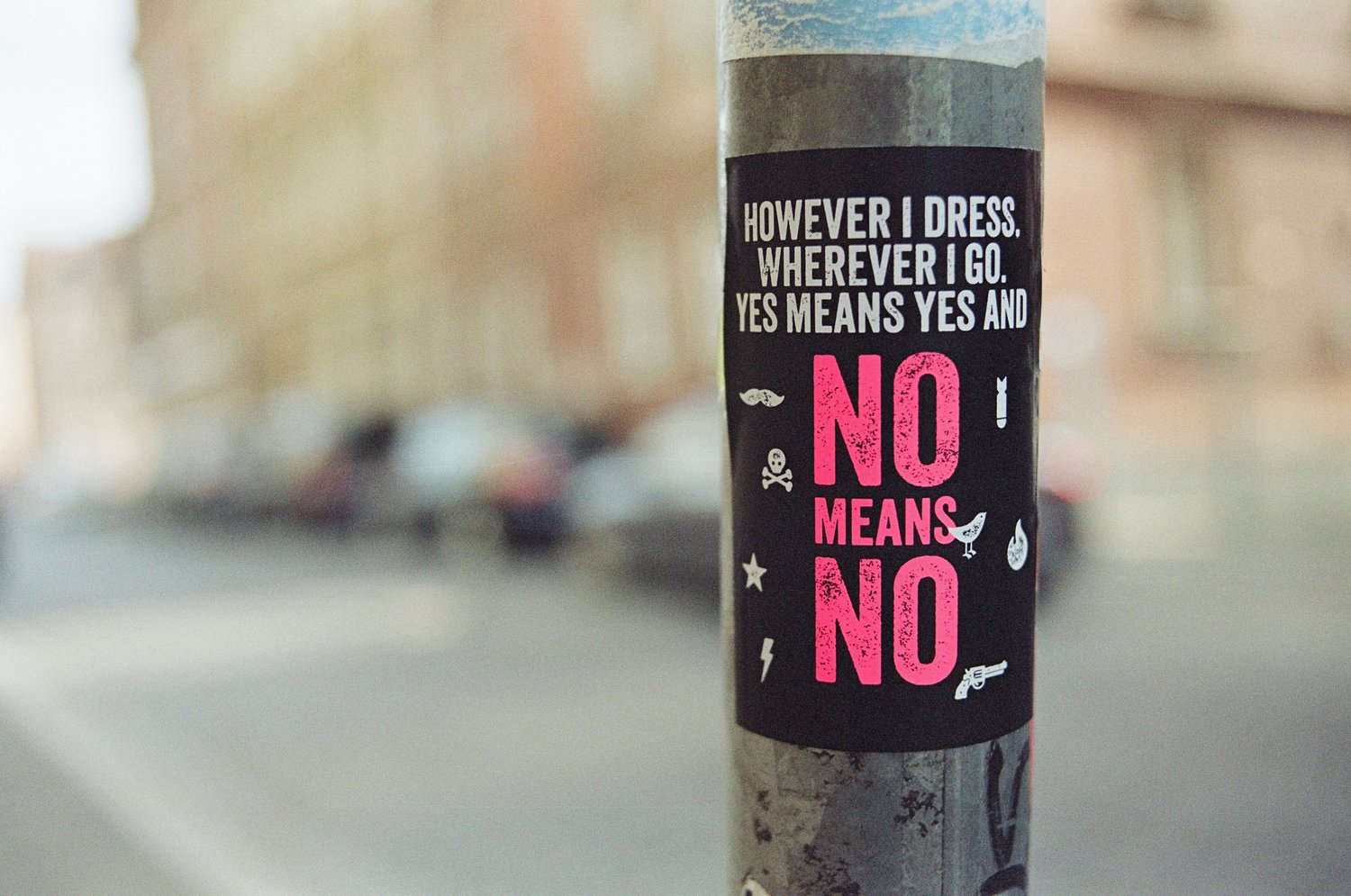
As much as British cinema loves a period drama, for whatever reason the trials and tribulations of peasants get a lot less screentime than the aristocracy. In fact, probably the most insightful piece of media created around the pre-industrial working class is the Constitutional Peasants scene from Monty Python and the Holy Grail, where King Arthur argues with local serf Dennis about the “anarcho-syndicalist commune” to which he belongs. Dennis would likely have some choice words about the happenings in the remote Scottish hamlet where Athina Rachel Tsangari’s Harvest takes place, as hundreds of years of humble farming are threatened by the unexpected arrival of a mysterious mapmaker.
The local folk are naturally suspicious of outsiders, and after a barn is set on fire, they capture a trio of strangers, stringing the men up in the stocks and cutting off the hair of the woman, who flees into the surrounding forest. Walter Thirsk (Caleb Landry Jones) looks on with his piercing blue eyes; he’s a man of few words, but nothing much escapes his gaze. Walter knows the lands like the back of his hand, having lived there his whole life, but not always among the peasants who work the land. Once the direct employee of the benevolent but meek Master Kent (Harry Melling), Walter gave up his comfortable life when he fell in love and chose to work the land with his wife, until she passed away, leaving him alone and melancholy. His joy comes now from the natural world; in the film’s gorgeous opening sequence, he is seen roaming the wild fields, pausing to gently admire a butterfly upon his hand.
Get more Little White Lies
Walter favours a simple life, but he is decidedly not a simple man; when Kent introduces him to the talented mapmaker Philip Earle (Arinzé Kene) who is to complete a surveyance of the land, Walter regards him with a degree of suspicion. He is well aware that change need not be for the better, and despite how charming Earle is, immediately enamoured of the beauty of the countryside, Walt is right to be suspicious. Several days later, Kent’s decidedly less agreeable kinsman Edmund Jordan (Frank Dillane) arrives with grand plans to turn the land into sheep pastures, signalling the end of Walt’s rural idyll, and the beginning of rising tensions between the serfs and the gentry.
The most impressive aspect of Harvest is Sean Price Williams’ stunning cinematography, which does justice to the rugged beauty of the Scottish coast, capturing every blade of grass and patch of claggy mud in arresting detail. Williams, a mainstay of the hallowed New York indie scene, is every bit as skilled at capturing the blazing sunset of 18th-century Scotland as he is the gritty streets of the Big Apple, and great thought has been put into the sensory aspects of Harvest, from its sound design that emphasises the howling wind, the lazy buzz of bountiful insects and, of course, the jubilant celebrations that come with the event which gives the film its name.
In 2023’s Venice Film Festival, Landry Jones debuted his Scottish accent, remaining “in character” throughout the press conference for Luc Besson’s Dogman. The dedication has mostly paid off, although he does sometimes slide towards Irish – Walt is a softer character than he typically gets to play, an almost monastic figure as he endures both the ire of his peers and the sneering new overseer, seemingly with no way out of his difficult lot in life. Walt’s persistent inaction and hesitation indicate his reluctance to lead, and the man is most comfortable when roaming the wilderness, but his community looks to him for leadership and Edmund Jordan expects him to toe the line.
Perhaps the inferno which opens the film is an omen, the black smoke billowing into the sky like a signal fire, a warning of carnage yet to come. The kinship that develops between Philip Earle and Walt is the core of the film and perhaps its most tragic element, as they are good men placed in unfortunate positions. Yet sometimes the film’s subtlety is obfuscating, and Harvest could delve more into the almost instantaneous racism Earle faces as a Black man in an all-white community – his character suffers the most, and the film doesn’t have much interest in interrogating how systematic racism has its roots in early capitalism.
It’s a tragic film, but never a melodramatic one – tensions build slowly, and although the sense of impending collapse is present from the start, Tsangari’s sharp sensibilities compensate for any predictability, with the key performances of Landry Jones, Kene and Melling standing out (Melling, it must be said, it’s perhaps England’s greatest hope for the future of character acting, always a delight when he turns up in a part) and providing Harvest’s emotional heft. Those hoping for the satire of Chevalier or absurdism of Attenberg might be surprised by the solemn straight-forwardness of Harvest, but it’s a remarkably compelling work (and even sometimes a funny one!) that mourns a land lost, crushed underfoot by rot that masquerades as progress.




